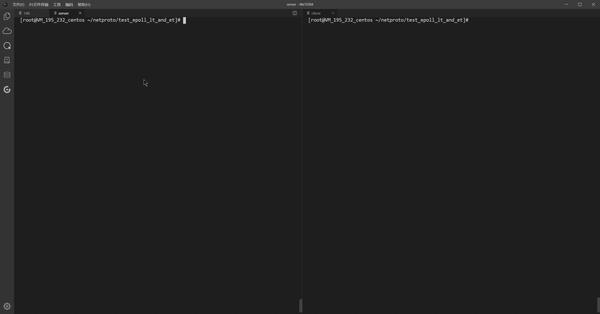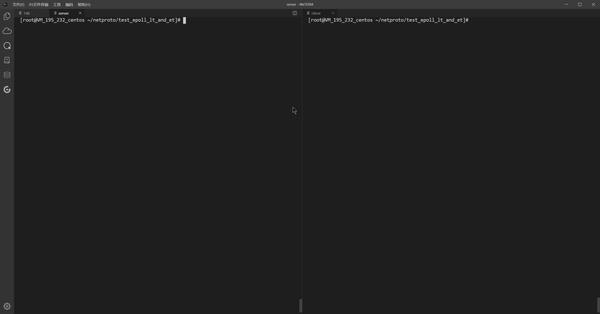

十个问题理解 Linux epoll 工作原理
source link: https://zhuanlan.zhihu.com/p/378892166
Go to the source link to view the article. You can view the picture content, updated content and better typesetting reading experience. If the link is broken, please click the button below to view the snapshot at that time.
十个问题理解 Linux epoll 工作原理
作者:dustinzhou,腾讯 IEG 运营开发工程师
epoll 是 linux 特有的一个 I/O 事件通知机制。很久以来对 epoll 如何能够高效处理数以百万记的文件描述符很有兴趣。近期学习、研究了 epoll 源码,在这个过程中关于 epoll 数据结构和作者的实现思路产生出不少疑惑,在此总结为了 10 个问题并逐个加以解答和分析。 本文基于的内核源码版本是2.6.39 版本 。
Question 1: 是否所有的文件类型都可以被 epoll 监视?
答案:不是。 看下面这个实验代码:
#include <stdio.h>
#include <unistd.h>
#include <sys/epoll.h>
#include <stdlib.h>
#include <sys/types.h>
#include <sys/stat.h>
#include <fcntl.h>
#include <errno.h>
#define MAX_EVENTS 1
int main (void)
{
int epfd;
epfd = epoll_create(100); /* 创建epoll实例,预计监听100个fd */
if (epfd < 0) {
perror ("epoll_create");
}
struct epoll_event *events;
int nr_events, i;
events = malloc (sizeof (struct epoll_event) * MAX_EVENTS);
if (!events) {
perror("malloc");
return 1;
}
/* 打开一个普通文本文件 */
int target_fd = open ("./11.txt", O_RDONLY);
printf("target_fd %d\n", target_fd);
int target_listen_type = EPOLLIN;
for (i = 0; i < 1; i++) {
int ret;
events[i].data.fd = target_fd; /* epoll调用返回后,返回给应用进程的fd号 */
events[i].events = target_listen_type; /* 需要监听的事件类型 */
ret = epoll_ctl (epfd, EPOLL_CTL_ADD, target_fd, &events[i]); /* 注册fd到epoll实例上 */
if (ret) {
printf("ret %d, errno %d\n", ret, errno);
perror ("epoll_ctl");
}
}
/* 应用进程阻塞在epoll上,超时时长置为-1表示一直等到有目标事件才会返回 */
nr_events = epoll_wait(epfd, events, MAX_EVENTS, -1);
if (nr_events < 0) {
perror ("epoll_wait");
free(events);
return 1;
}
for (i = 0; i < nr_events; i++) {
/* 打印出处于就绪状态的fd及其事件 */
printf("event=%d on fd=%d\n", events[i].events, events[i].data.fd);
}
free (events);
close(epfd);
return 0;
}
编译、运行上面的代码,会打印出下列信息:
gcc epoll_test.c -o epdemo
./epdemo
target_fd 4
ret -1, errno 1
epoll_ctl: Operation not permitted
正常打开了"txt"文件 fd=4, 但调用 epoll_ctl 监视这个 fd 时却 ret=-1 失败了, 并且错误码为 1,错误信息为"Operation not permitted"。错误码指明这个 fd 不能够被 epoll 监视。
那什么样的 fd 才可以被 epoll 监视呢?
只有底层驱动实现了 file_operations 中 poll 函数的文件类型才可以被 epoll 监视!socket 类型的文件驱动是实现了 poll 函数的,因此才可以被 epoll 监视。struct file_operations 声明位置是在 include/linux/fs.h 中。
Question 2: ep->wq 的作用是什么?
答案:wq 是一个等待队列,用来保存对某一个 epoll 实例调用 epoll_wait()的所有进程。
一个进程调用 epoll_wait()后,如果当前还没有任何事件发生,需要让当前进程挂起等待(放到 ep->wq 里);当 epoll 实例监视的文件上有事件发生后,需要唤醒 ep->wq 上的进程去继续执行用户态的业务逻辑。之所以要用一个等待队列来维护关注这个 epoll 的进程,是因为有时候调用 epoll_wait()的不只一个进程,当多个进程都在关注同一个 epoll 实例时,休眠的进程们通过这个等待队列就可以逐个被唤醒了。
多个进程关注同一个 epoll 实例,那么有事件发生后先唤醒谁?后唤醒谁?还是一起全唤醒?这涉及到一个称为“惊群效应”的问题。
Question 3: 什么是 epoll 惊群?
答案:多个进程等待在 ep->wq 上,事件触发后所有进程都被唤醒,但只有其中 1 个进程能够成功继续执行的现象。其他被白白唤起的进程等于做了无用功,可能会造成系统负载过高的问题。 下面这段代码能够直观感受什么是 epoll 惊群:
#include <sys/types.h>
#include <sys/socket.h>
#include <sys/epoll.h>
#include <netdb.h>
#include <string.h>
#include <stdio.h>
#include <unistd.h>
#include <fcntl.h>
#include <stdlib.h>
#include <errno.h>
#include <sys/wait.h>
#define PROCESS_NUM 10
static int create_and_bind (char *port)
{
int fd = socket(PF_INET, SOCK_STREAM, 0);
struct sockaddr_in serveraddr;
serveraddr.sin_family = AF_INET;
serveraddr.sin_addr.s_addr = htonl(INADDR_ANY);
serveraddr.sin_port = htons(atoi(port));
bind(fd, (struct sockaddr*)&serveraddr, sizeof(serveraddr));
return fd;
}
static int make_socket_non_blocking (int sfd)
{
int flags, s;
flags = fcntl (sfd, F_GETFL, 0);
if (flags == -1)
{
perror ("fcntl");
return -1;
}
flags |= O_NONBLOCK;
s = fcntl (sfd, F_SETFL, flags);
if (s == -1)
{
perror ("fcntl");
return -1;
}
return 0;
}
#define MAXEVENTS 64
int main (int argc, char *argv[])
{
int sfd, s;
int efd;
struct epoll_event event;
struct epoll_event *events;
sfd = create_and_bind("8001");
if (sfd == -1)
abort ();
s = make_socket_non_blocking (sfd);
if (s == -1)
abort ();
s = listen(sfd, SOMAXCONN);
if (s == -1)
{
perror ("listen");
abort ();
}
efd = epoll_create(MAXEVENTS);
if (efd == -1)
{
perror("epoll_create");
abort();
}
event.data.fd = sfd;
//event.events = EPOLLIN | EPOLLET;
event.events = EPOLLIN;
s = epoll_ctl(efd, EPOLL_CTL_ADD, sfd, &event);
if (s == -1)
{
perror("epoll_ctl");
abort();
}
/* Buffer where events are returned */
events = calloc(MAXEVENTS, sizeof event);
int k;
for(k = 0; k < PROCESS_NUM; k++)
{
int pid = fork();
if(pid == 0)
{
/* The event loop */
while (1)
{
int n, i;
n = epoll_wait(efd, events, MAXEVENTS, -1);
printf("process %d return from epoll_wait!\n", getpid());
for (i = 0; i < n; i++)
{
if ((events[i].events & EPOLLERR) || (events[i].events & EPOLLHUP) || (!(events[i].events & EPOLLIN)))
{
/* An error has occured on this fd, or the socket is not ready for reading (why were we notified then?) */
fprintf (stderr, "epoll error\n");
close (events[i].data.fd);
continue;
}
else if (sfd == events[i].data.fd)
{
/* We have a notification on the listening socket, which means one or more incoming connections. */
struct sockaddr in_addr;
socklen_t in_len;
int infd;
char hbuf[NI_MAXHOST], sbuf[NI_MAXSERV];
in_len = sizeof in_addr;
infd = accept(sfd, &in_addr, &in_len);
if (infd == -1)
{
printf("process %d accept failed!\n", getpid());
break;
}
printf("process %d accept successed!\n", getpid());
/* Make the incoming socket non-blocking and add it to the list of fds to monitor. */
close(infd);
}
}
}
}
}
int status;
wait(&status);
free (events);
close (sfd);
return EXIT_SUCCESS;
}
将服务端的监听 socket fd 加入到 epoll_wait 的监视集合中,这样当有客户端想要建立连接,就会事件触发 epoll_wait 返回。此时如果 10 个进程同时在 epoll_wait 同一个 epoll 实例就出现了惊群效应。所有 10 个进程都被唤起,但只有一个能成功 accept。
为了解决 epoll 惊群,内核后续的高版本又提供了 EPOLLEXCLUSIVE 选项和 SO_REUSEPORT 选项,我个人理解两种解决方案思路上的不同点在于:EPOLLEXCLUSIVE 是在唤起进程阶段起作用,只唤起排在队列最前面的 1 个进程;而 SO_REUSEPORT 是在分配连接时起作用,相当于每个进程自己都有一个独立的 epoll 实例,内核来决策把连接分配给哪个 epoll。
Question 4: ep->poll_wait 的作用是什么?
答案:ep->poll_wait 是 epoll 实例中另一个等待队列。当被监视的文件是一个 epoll 类型时,需要用这个等待队列来处理递归唤醒。
在阅读内核代码过程中,ep->wq 还算挺好理解,但我发现伴随着 ep->wq 唤醒, 还有一个 ep->poll_wait 的唤醒过程。比如下面这段代码,在 eventpoll.c 中出现了很多次:
/* If the file is already "ready" we drop it inside the ready list */
if ((revents & event->events) && !ep_is_linked(&epi->rdllink)) {
list_add_tail(&epi->rdllink, &ep->rdllist);
/* Notify waiting tasks that events are available */
if (waitqueue_active(&ep->wq))
wake_up_locked(&ep->wq);
if (waitqueue_active(&ep->poll_wait))
pwake++;
}
spin_unlock_irqrestore(&ep->lock, flags);
atomic_long_inc(&ep->user->epoll_watches);
/* We have to call this outside the lock */
if (pwake)
ep_poll_safewake(&ep->poll_wait);
查阅很多资料后才搞明白其实 epoll 也是一种文件类型,其底层驱动也实现了 file_operations 中的 poll 函数,因此一个 epoll 类型的 fd 可以被其他 epoll 实例监视。而 epoll 类型的 fd 只会有“读就绪”的事件。当 epoll 所监视的非 epoll 类型文件有“读就绪”事件时,当前 epoll 也会进入“读就绪”状态。
因此如果一个 epoll 实例监视了另一个 epoll 就会出现递归。举个例子,如图所示:
- epollfd1 监视了 2 个“非 epoll”类型的 fd
- epollfd2 监视了 epollfd1 和 2 个“非 epoll”类型的 fd
如果 epollfd1 所监视的 2 个 fd 中有可读事件触发,fd 的 ep_poll_callback 回调函数会触发将 fd 放到 epollfd1 的 rdllist 中。此时 epollfd1 本身的可读事件也会触发,就需要从 epollfd1 的 poll_wait 等待队列中找到 epollfd2,调用 epollfd1 的 ep_poll_callback(将 epollfd1 放到 epollfd2 的 rdllist 中)。因此 ep->poll_wait 是用来处理 epoll 间嵌套监视的情况的。
Question 5: ep->rdllist 的作用是什么?
答案:epoll 实例中包含就绪事件的 fd 组成的链表。
通过扫描 ep->rdllist 链表,内核可以轻松获取当前有事件触发的 fd。而不是像 select()/poll() 那样全量扫描所有被监视的 fd,再从中找出有事件就绪的。因此可以说这一点决定了 epoll 的性能是远高于 select/poll 的。
看到这里你可能又产生了一个小小的疑问:为什么 epoll 中事件就绪的 fd 会“主动”跑到 rdllist 中去,而不用全量扫描就能找到它们呢? 这是因为每当调用 epoll_ctl 新增一个被监视的 fd 时,都会注册一下这个 fd 的回调函数 ep_poll_callback, 当网卡收到数据包会触发一个中断,中断处理函数再回调 ep_poll_callback 将这个 fd 所属的“epitem”添加至 epoll 实例中的 rdllist 中。
Question 6: ep->ovflist 的作用是什么?
答案:在 rdllist 被占用时,用来在不持有 ep->lock 的情况下收集有就绪事件的 fd。
当 epoll 上已经有了一些就绪事件的时候,内核需要扫描 rdllist 将就绪的 fd 返回给用户态。这一步通过 ep_scan_ready_list 函数来实现。其中 sproc 是一个回调函数(也就是 ep_send_events_proc 函数),来处理数据从内核态到用户态的复制。
/**
* ep_scan_ready_list - Scans the ready list in a way that makes possible for the scan code, to call f_op->poll(). Also allows for O(NumReady) performance.
* @ep: Pointer to the epoll private data structure.
* @sproc: Pointer to the scan callback.
* @priv: Private opaque data passed to the @sproc callback.
* Returns: The same integer error code returned by the @sproc callback.
*/
static int ep_scan_ready_list(struct eventpoll *ep,
int (*sproc)(struct eventpoll *,
struct list_head *, void *),
void *priv)
由于 rdllist 链表业务非常繁忙(epoll 增加监视文件、修改监视文件、有事件触发...等情况都需要操作 rdllist),所以在复制数据到用户空间时,加了一个 ep->mtx 互斥锁来保护 epoll 自身数据结构线程安全,此时其他执行流程里有争抢 ep->mtx 的操作都会因命中 ep->mtx 进入休眠。
但加锁期间很可能有新事件源源不断地产生,进而调用 ep_poll_callback(ep_poll_callback 不用争抢 ep->mtx 所以不会休眠),新触发的事件需要一个地方来收集,不然就丢事件了。这个用来临时收集新事件的链表就是 ovflist。我的理解是:引入 ovflist 后新产生的事件就不用因为想向 rdllist 里写而去和 ep_send_events_proc 争抢自旋锁(ep->lock), 同时 ep_send_events_proc 也可以放心大胆地在无锁(不持有 ep->lock)的情况下修改 rdllist。
看代码时会发现,还有一个 txlist 链表,这个链表用来最后向用户态复制数据,rdllist 要先把自己的数据全部转移到 txlist,然后 rdllist 自己被清空。ep_send_events_proc 遍历 txlist 处理向用户空间复制,复制成功后如果是水平触发(LT)还要把这个事件还回 rdllist,等待下一次 epoll_wait 来获取它。
ovflist 上的 fd 会合入 rdllist 上等待下一次扫描;如果 txlist 上的 fd 没有处理完,最后也会合入 rdllist。这 3 个链表的关系是这样:
Question 7: epitem->pwqlist 队列的作用是什么?
答案:用来保存这个 epitem 的 poll 等待队列。
首先介绍下什么是 epitem。epitem 是 epoll 中很重要的一种数据结构, 是红黑树和 rdllist 的基本组成元素。需要监听的文件和事件信息,都被包装在 epitem 结构里。
struct epitem {
struct rb_node rbn; // 用于加入红黑树
struct list_head rdllink; // 用于加入rdllist
struct epoll_filefd ffd; // 包含被监视文件的文件指针和fd信息
struct list_head pwqlist; // poll等待队列
struct eventpoll *ep; // 所属的epoll实例
struct epoll_event event; // 关注的事件
/* 其他成员省略 */
};
回忆一下上文说到,每当用户调用 epoll_ctl()新增一个监视文件,都要给这个文件注册一个回调函数 ep_poll_callback, 当网卡收到数据后软中断会调用这个 ep_poll_callback 把这个 epitem 加入到 ep->rdllist 中。
pwdlist 就是跟 ep_poll_callback 注册相关的。
当调用 epoll_ctl()新增一个监视文件后,内核会为这个 epitem 创建一个 eppoll_entry 对象,通过 eppoll_entry->wait_queue_t->wait_queue_func_t 来设置 ep_poll_callback。pwdlist 为什么要做成一个队列呢,直接设置成 eppoll_entry 对象不就行了吗?实际上不同文件类型实现 file_operations->poll 用到等待队列数量可能不同。虽然大多数都是 1 个,但也有例外。比如“scullpipe”类型的文件就用到了 2 个等待队列。
pwqlist、epitem、fd、epoll_entry、ep_poll_callback 间的关系是这样:
Question 8: epmutex、ep->mtx、ep->lock 3 把锁的区别是?
答案:锁的粒度和使用目的不同。
- epmutex 是一个全局互斥锁,epoll 中一共只有 3 个地方用到这把锁。分别是 ep_free() 销毁一个 epoll 实例时、eventpoll_release_file() 清理从 epoll 中已经关闭的文件时、epoll_ctl() 时避免 epoll 间嵌套调用时形成死锁。我的理解是 epmutex 的锁粒度最大,用来处理跨 epoll 实例级别的同步操作。
- ep->mtx 是一个 epoll 内部的互斥锁,在 ep_scan_ready_list() 扫描就绪列表、eventpoll_release_file() 中执行 ep_remove()删除一个被监视文件、ep_loop_check_proc()检查 epoll 是否有循环嵌套或过深嵌套、还有 epoll_ctl() 操作被监视文件增删改等处有使用。可以看出上述的函数里都会涉及对 epoll 实例中 rdllist 或红黑树的访问,因此我的理解是 ep->mtx 是一个 epoll 实例内的互斥锁,用来保护 epoll 实例内部的数据结构的线程安全。
- ep->lock 是一个 epoll 实例内部的自旋锁,用来保护 ep->rdllist 的线程安全。自旋锁的特点是得不到锁时不会引起进程休眠,所以在 ep_poll_callback 中只能使用 ep->lock,否则就会丢事件。
Question 9: epoll 使用红黑树的目的是什么?
答案:用来维护一个 epoll 实例中所有的 epitem。
用户态调用 epoll_ctl()来操作 epoll 的监视文件时,需要增、删、改、查等动作有着比较高的效率。尤其是当 epoll 监视的文件数量达到百万级的时候,选用不同的数据结构带来的效率差异可能非常大。
数据结构特点从时间(增、删、改、查、按序遍历)、空间(存储空间大小、扩展性)等方面考量,红黑树都是非常优秀的数据结构(当然这以红黑树比较高的实现复杂度作为代价)。 epoll 红黑树中的 epitem 是按什么顺序组织的。阅读代码可以发现是先比较 2 个文件指针的地址大小,如果相同再比较文件 fd 的大小。
/* Compare RB tree keys */
static inline int ep_cmp_ffd(struct epoll_filefd *p1, struct epoll_filefd *p2)
{
return (p1->file > p2->file ? +1 : (p1->file < p2->file ? -1 : p1->fd - p2->fd));
}
epoll、epitem、和红黑树间的组织关系是这样:
Question 10: 什么是水平触发、边缘触发?
答案:水平触发(LT)和边缘触发(ET)是 epoll_wait 的 2 种工作模式。 水平触发:关注点是数据(读操作缓冲区不为空,写操作缓冲区不为满),epoll_wait 总会返回就绪。LT 是 epoll 的默认工作模式。
边缘触发:关注点是变化,只有监视的文件上有数据变化发生(读操作关注有数据写进缓冲区,写操作关注数据从缓冲区取走),epoll_wait 才会返回。
看一个实验 ,直观感受下 2 种模式的区别, 客户端都是输入“abcdefgh” 8 个字符,服务端每次接收 2 个字符。
水平触发时,客户端输入 8 个字符触发了一次读就绪事件,由于被监视文件上还有数据可读故一直返回读就绪,服务端 4 次循环每次都能取到 2 个字符,直到 8 个字符全部读完。

边缘触发时,客户端同样输入 8 个字符但服务端一次循环读到 2 个字符后这个读就绪事件就没有了。等客户端再输入一个字符串后,服务端关注到了数据的“变化”继续从缓冲区读接下来的 2 个字符“c”和”d”。

小结
本文通过 10 个问题,其实也是从 10 个不同的视角去观察 epoll 这间宏伟的殿堂。至此也基本介绍完了 epoll 从监视事件,到内部数据结构组织、事件处理,最后到 epoll_wait 返回的整体工作过程。 最后附上一张 epoll 相关数据结构间的关系图,在学习 epoll 过程中它曾解答了我心中不少的疑惑,我愿称之为灯塔~
参考资料
Recommend
About Joyk
Aggregate valuable and interesting links.
Joyk means Joy of geeK